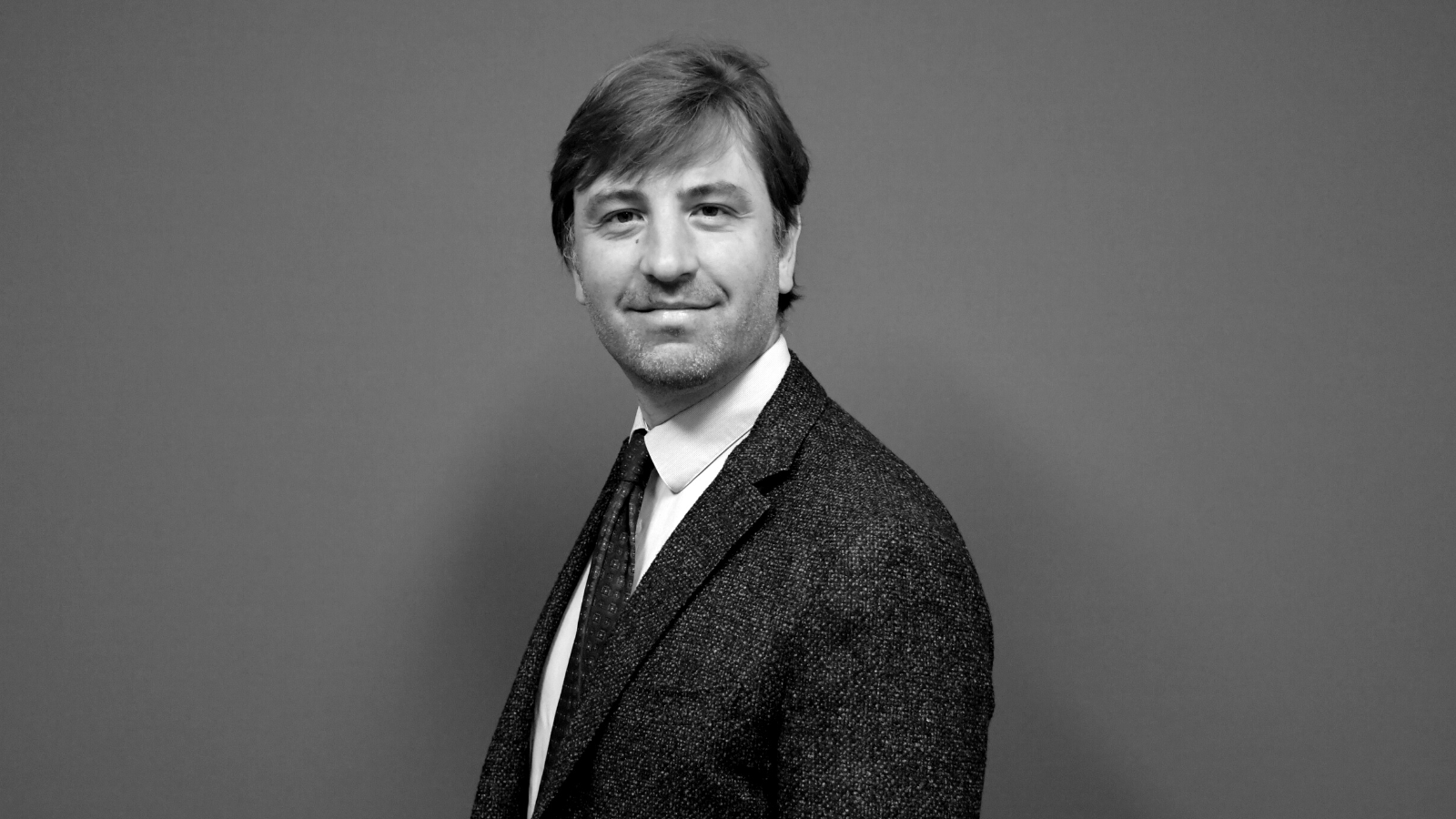The future of biogas in Europe: it’s a local affair
The prospects for biogas in Europe look bright, with conservative estimates pointing to a tenfold increase in production by 2030. However, the industry will need to stay rooted in the local economy and come clean on environmental credentials if it wants to avoid a green backlash, analysts say.
Biogas production remains tiny at the moment. The whole industry in Europe currently produces about 2 billion cubic meters (bcm) of biogas per year, a small fraction of total EU gas consumption, which currently stands at around 470 bcm per annum.
“At the moment, it’s nothing – it’s peanuts,” says Marc-Antoine Eyl-Mazzega, energy director at the French Institute for International Relations (IFRI), a think tank.
Most of the production is currently located in Germany, which hosts 9,500 or so biogas plants, more than half the total number of installations currently in operation across the EU.
But the industry has big ambitions for the future, with France and Italy now seen as the new European leaders. A study commissioned by Gas for Climate, an industry consortium, claims production in Europe could skyrocket to 98 bcm of biomethane by 2050 – a 4,800% increase on current levels.
Those estimates are controversial however. The International Council on Clean Transportation (ICCT), a green NGO, evaluated the potential for sustainable biogas production in Europe at 36 bcm per year by 2050, much less than industry projections.
So why do estimates diverge so widely? Essentially because of projected costs, which are linked to environmental concerns.
Germany’s misfortunes
In Germany, the inputs going into biogas plants were almost entirely agricultural crops – mainly maize – that were grown specifically for the industry.
However, the intensive agriculture it required, as well as the overall environmental footprint of the industry, attracted growing criticism and the government decided to halt its support.
Today, even industry representatives acknowledge that the German experience with biogas was not convincing.
“Germany was the trouble child of Europe because of the huge amount of maize that was grown as a primary crop for use in biogas production,” says Susanna Pflüger, secretary general of the European Biogas Association (EBA), a trade group. “All these sustainability issues were raised and the German government put the support scheme on ice,” she told EURACTIV.
When the German government decided to roll back support in 2014, production soon began to stagnate. “Nowadays, they only support biogas when it is produced in very small installations, basically farmer’s installations, using mainly manure as a feedstock,” Pflüger said.
“So there is no more support for primary energy crops used for biogas anymore in Germany,” she told EURACTIV.
These days, the industry prefers to focus on less controversial feedstocks such as livestock manure, or agriculture waste and residues, which do not compete with farmland used for food production.
This is the model championed by Denmark, which opened its first manure-based biogas plant in 1975. The country started developing biomethane at scale after the adoption of its national “energy agreement” for 2012-2020. As a result, “biomethane now represents about 10% of what’s injected in the natural gas grid, which is a lot,” Eyl-Mazzega says.
The Danish model has now become the gold standard in Europe, and has largely inspired others, like France and Italy.
A circular economy approach, rooted at local level
In France, the government’s stated objective is to offer an additional source of income to farmers and stimulate the local economy in rural areas. There are environmental benefits too: biomethane production from agricultural waste and residues produce digestates which provide an alternative to chemical fertilisers. Those in turn enable avoided carbon emission, which is a good thing for the climate.
The economic and environmental benefits of biogas production – mainly centred on rural communities – are not called into question by environmentalists. The difficulty, they point out, is to ensure installations are not too big and located in the right place in order to avoid transport-related costs and emissions.
The ICCT study, for instance, points out that biomethane production plants are typically scattered across a multitude of farms in the countryside, far away from urban centres where gas grids are typically located. Collecting all that biomethane from the farm, and bringing it by truck for injection into the urban gas grid involves additional transportation costs, and related carbon emissions, which also have to be taken into account, they point out.
This is why greens see biomethane mainly as a local source of energy. “By far the most economic way of using biogas is to use it on site,” says Lisa Fischer, a researcher at climate think tank E3G. “But then, it doesn’t really generate additional income for farmers,” she adds.
“So it’s a bit either or – either you consume it on site, or you sell it to the grid,” Fischer told EURACTIV.
Still, France had the highest growth rate for biomethane plants in 2017-2018 due to favourable policy conditions, according to Bioenergy Europe, a trade association. The government’s aim is to reach 1,000 biomethane plants injecting gas into the grid by 2020.
And the French approach – for the time being – is indeed firmly rooted in a local, circular economy model.
“What we see now increasingly in France is that you have basically a biomethane plant that will be integrated in a system whereby it will supply fuel for the local city buses, school buses and logistics companies that are located nearby,” says Marc-Antoine Eyl-Mazzega of IFRI.
“And so this circular economy aspect is being closed by the opportunity to use the digestate from the biomethane as fertiliser,” he says.
Methane leakage
However Eyl-Mazzega says this is only the theory. According to him, there are a number of fundamental issues that need to be addressed in order for biomethane production to become truly circular and environmentally-friendly.
The first relates to what comes in the biomethanation plant. If the gas is produced from the chemical breakdown of industrial or municipal waste, the digestates probably won’t qualify to be used as fertiliser, he points out. That means strict quality controls are needed on site, which requires competent staff to manage the installations on a daily basis.
Another aspect relates to location. Ideally, Eyl-Mazzega says biomethanation units should be located close to the natural gas grid or be fitted with fuelling stations for vehicles on site, “because these connection costs can be very expensive”.
One particular challenge relates to the process itself and the potential leakage of methane, a greenhouse gas which is about 70-80 times more potent than CO2. According to Eyl-Mazzega, specific skills are needed to test whether the installations are properly sealed to prevent methane from leaking. However, those tests require “a lot of water,” he says. “And here, there is a clearly an environmental issue that has to be addressed”.
Finally, the size of biomethane plants matters hugely, Eyl-Mazzega continues. “You need infrastructure that is not too small in order to have economies of scale but you cannot have super-large infrastructure either,” he cautions, saying this “might carry a risk in terms of imported deforestation.”
“One needs to avoid the mistakes that were made when coal power plants were switched to take in wood pellets. In the South of France, we came to a situation for example, where loads of wood were imported from Brazil to the Port of Marseille and transported for burning in an electricity plant.”
Scaling up: Guarantees of origin
All these issues don’t matter much for the time being because the biogas industry is so small. But the sector will come under increasing scrutiny as the industry grows in size.
France had the highest growth rate for biomethane plants in 2017-2018 due to favourable policy conditions, according to Bioenergy Europe, a trade association.
So to ensure trust in the industry, Eyl-Mazzega says a robust system of Guarantees or Origin (GOs) is needed to certify how the biomethane is produced, and with what kind of feedstocks. Because the environmental impact won’t be the same if the gas comes from agricultural residues or from dedicated crops, like the carbon-intensive maize that was once promoted in Germany.
The biogas sector itself is quick to point to the limitations of the German model, saying Denmark, Italy and France are now showing the way forward.
“What we are talking about – and what farmers are talking about – is using secondary crops for biogas production,” says Susanna Pflüger from the European Biogas Association (EBA). “This is already the practice in Italy: farmers there grow two crops per year, one for food one for fuel, which means they use the land more efficiently,” she says.
“Biogas is a very local product. We don’t want to start bringing feedstocks from far away. It must be as close as possible from where it’s consumed,” Pflüger insists.
Environmentalists agree. But they also warn that whether secondary crops are environmentally-friendly or not depends very much on local circumstances.
“You can do things like intercropping in Italy and that may be fine and sustainable because of the climatic conditions there,” says Lisa Fischer of E3G. “But this is not replicable necessarily elsewhere in Europe, especially if you move towards the north,” she points out.
Eventually, the industry’s ability to grow in size will depend on its capacity to demonstrate the environmental sustainability of its products. This is why the introduction of a European-wide system of Guarantees of Origin (GOs) is considered essential for the sector.
“What we’re asking for is that all countries producing biomethane put in place national registries,” Pflüger says. “The national registries should be harmonised all over Europe, issuing the same certificates and naming the feedstocks used for biomethane production.”
According to Pflüger, the European Commission is currently evaluating a scheme developed by the European Renewable Gas Registry. The scheme is currently voluntary but could receive the nod from EU policymakers and become mandatory in the future.
“Our problem is not just tracing sustainability,” she says. “Once biomethane is injected into the grid, you can’t separate it from natural gas, the molecule is the same,” she points out. “So we need to trace what goes in and what goes out of the pipeline in order to avoid double counting”.
Until a robust traceability system is in place, growth projections for the industry are likely to continue diverging.
“What we say for 2030 is that we can have something like 45 bcm from anaerobic digestion and biomass gasification,” Pflüger says, referring to the potential of intercropping and use of residues from the agriculture and forestry sector.
Eyl-Mazzega, for his part, comes up with more modest numbers. “My take is that we could reach around 20 bcm of biomethane production by 2030 in the European Union,” he says – much less than what the industry came up with, but still 10 times more than current production levels.
Policymakers will ultimately decide where they want to place the cursor. But Eyl-Mazzega says the biomethane debate has to be seen in the context of the wider greening of gas: if regulators get it right with biomethane, they will increase their chances of success when it comes to promoting other low-carbon gases like hydrogen.
And this could matter hugely for the success of the transition to a 100% renewable energy system.
> Read the article on Euractiv website

Media:
Share






